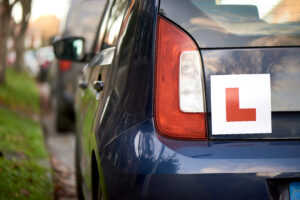
Do you currently own, or are thinking of starting your own driving school?
Investing in a vehicle is not only the most fundamental component, but as a driving instructor also involves a few unique considerations.
You’ll not only need to think about what suits you as a driver, but you’ll need to choose based on what will be most beneficial for your students. In this situation, selecting the right car is the lifeblood to your business. To help guide you through the process, we’ve outlined a few things to look out for.
Good handling
Comfortable handling is best for any driver, but particularly vital for new drivers and those who’ve never controlled a car before.
While the term ‘handling’ is used to describe the sensations that you’ll experience when steering a car, it describes other aspects of how the car feels. These include its overall safety and how capable it is of staying on the tarmac.
Handling also refers to the effort it takes to turn the wheel. For learner drivers, you’ll need to look out for ‘nicely weighted’ handling – steering that’s neither too heavy nor too light.
Smooth ride
Every driving instructor needs a car that’s smooth to drive. Not only will this ensure that you’ll comfortably be able to work long shifts, but it should help your pupils feel more at ease too.
Any vehicle with a bumpier ride usually transmits more ‘feedback’ from the road to the seats. The quality and smoothness of your car’s ride is improved by good quality tyres and suspension, which reduce the need for excessive acceleration and improves fuel efficiency.
Fuel efficiency
Since you’ll be spending most of your time on the roads, you’ll want a model that’s both cost-effective and eco-friendly.
Electric and hybrid vehicles are powered by renewable energies, offering a sustainable choice for instructors. When it comes down to costs, you’ll need to weigh up the cost of electric and petrol cars to see if it pays to be greener.
Furthermore, it’s more than likely that your pupils will be driving conventional cars once they pass their tests – so it might be wise to help them get familiar with traditionally fuelled engine.
Practicality
When you’re helping pupils to progress through their driving lessons, you’ll need a car that gives them confidence in various different scenarios – from navigating narrow streets to successfully completing manoeuvres.
Try to look for something that’s practical in both size and shape. Smaller, lighter cars are often the most sensible choice, especially if you’re teaching your pupils in a busy, urban area.
Safety
The European New Car Assessment Programme (NCAP) is the leading provider of consumer information on the safety of new cars. Their overall safety rating was first introduced in 2009, and assessed four critical areas:
Protection of adult occupants, for drivers and passengers
Protection of child occupants
Pedestrian protection, now extended to include cyclists and other vulnerable road users
Safety features, including driver-assistance technologies
When you’re choosing a new car, the recommended minimum rating is 4+/A. Above all, you’ll need to make every effort to keep you and your pupils as safe as possible.
Read more:
Choosing the right car: Top tips for driving instructors






